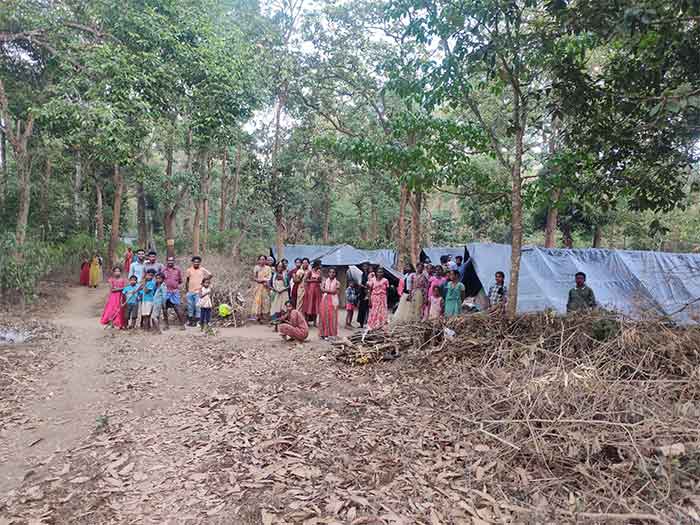
How relocating energy in the commons helps scaling-up renewables & saving energy
Is energy a mere commodity, or is it a common good? Why is this relevant in the first place? Here we look at why energy is part of our commons, from the sources to the product itself. In a second time, we will see that relocating energy in the commons has very important implications: it helps solve the energy efficiency dilemma (i.e., we need to reduce our energy consumption but who’s going to pay for that?) and scale-up renewables.
What is a commons?
Once upon a time… there was an alpine pasture, where cattle from the village came to graze. The air was fresh and brisk, there was enough grass for the animals. But it was also a delicate, sensitive environment: put too much pressure on it (too much cattle) and it would be ruined in no-time… In other words, the pasture was a finite resource, which could support a finite number of cattle.
A (finite) natural resource, that is necessary to all: that’s a natural commons.
There are three way of dealing with natural commons:
- The commons (e.g., the pasture) is claimed by someone, who controls its access and monetize it: it becomes a commodity and the usage profits mainly to a few.
- There is no communication in the community and no rules are set to use the commons. Individuals tend to exploit the commons as much as possible in order to maximise their own profit and compete for accessing to it. Eventually, the commons is destroyed. This is how Garrett Hardin described modern humans’ behaviour in the “Tragedy of the Commons” in 1968, which led him to argue that only privatization (as in 1.) or state regulation are successful mode of governance for the commons.
- People actually talk to each other and are conscious of the problem of over-using their commons. Therefore, communities organise themselves and set some rules, compensation mechanisms and sanctions against free-riders. Benefits are shared and sustained. This is what Elinor Ostrom (and her colleagues) reported upon throughout her career: communities are able to (and do) manage their common goods by themselves.
Next to the finite or physical resources defining the classical commons framework, we can think of other non-finite and more abstract resources that can be treated as commons and referred to as social commons: digital commons, knowledge commons, health commons, urban commons… Shifting the paradigm from commodity to commons helps to reduce the (artificial) scarcity of these resources (created and sustained by privatisation and monetisation) by having a common-ownership or no-ownership. This is best illustrated by the creative common licences, which allow (for some of them) companies to sell a product but not to claim its ownership (which means that other companies can sell the same product, modify it, etc…).
And finally, there’s the act of commoning: doing together, sharing, benefiting from each other. As we saw in the previous episode, this is one of the recurrent arguments given by members of energy cooperatives as a ground and as a co-benefit from their project.
Renewable energy is a common good
Here we will focus on renewable energy (RE) but this discussion also applies to fossil fuels. According to the definitions above, RE is a commons and we demonstrate this using three different viewpoints:
- the source (wind, sun…),
- the product (energy and more specifically electricity), and
- the energy transition process (i.e., the switch towards clean renewables).
The source. The renewable sources of energy (especially wind, sun, water and in a lesser extend biomass) are clearly part of our natural commons: no-one can claim their ownership and they belong to all. Furthermore, and this is particularly important, they are finite resources. It is therefore crucial to make sure that the access to these resources is equally shared throughout the society.
The product. Electricity and energy in a broader sense are part of the social commons. Indeed, accessing to energy being necessary in modern societies, it becomes a common good. And due to finite sources, the amount of energy available is also finite.
It is crucial to avoid the appropriation of this common good by individuals or single actors (i.e., free-riders) in order to prevent the creation of an artificial scarcity and efficiently fight energy poverty. If this does not sound too serious in the western word, it is a huge issue in poorer countries and has been placed in the United Nation agenda for 2030 as the sustainable development goal number 7.
Energy transition. By looking at the process of switching from fossil fuels to renewable sources, we enter into the field of “climate change mitigation”. Decarbonising the energy sector falls into the global commons: every gramme of CO2 released in the atmosphere will have an effect on all of us. The Intergovernmental Panel on Climate Change (IPCC) stresses the threat posed by free-riders to our mitigation efforts (summary for policy makers, AR5): “Effective mitigation will not be achieved if individual agents advance their own interests independently.”
As one can read on the website of the Mercator research Institute on Global Commons (MCC), energy is also part of the social commons: “These are public goods providing access to health services, education, clean water, sanitation, energy, or transport and communication infrastructure. They are essential for human well-being as the level of provision of these goods has significant effects on both growth and inequality.” The MCC describes the dilemma of the energy transition as an overuse of the global commons and an under-provision of the social commons.
The energy transition is a huge task for our generation and it creates both challenges and opportunities. On the winners’ side, a new market is being created, which is already profitable enough to attract institutional investors. Large investment in renewables from private sources is potentially a good news, as it speeds up the energy transition. However, there are serious drawbacks in the commodification of energy. First, the returns on investment will remain in private hands, which is a loss of revenue for society and increases the concentration of capital into the hands of a few. Second, as these investments are profit-driven, the primary goal is to install the technology providing the highest income, regardless of people’s needs and desires (so not necessarily the appropriate technology).
To summarize, here is how the EU Horizon 2020 research project REScooppresents the social relevance of framing RE sources in the commons (policy recommendation):
“Wind, solar, hydro, biomass and geothermal energy are natural resources. They in fact belong to no one and are in principle available to all. They are common goods. From the perspective of social justice, more attention therefore must be paid to the way in which decentralised renewable energy sources are managed. In a world where energy is scarce, these sources of energy will mean income for the operators. Citizens and users therefore have every interest in keeping this local energy production in their own hands as much as possible. Governments too have every interest in anchoring decentralised renewable energy with the users as much as possible so that the added value of the production also benefits society. This is especially true for wind energy, an energy source that extends over a larger area, but ultimately is exploited on a small site. The benefit of this exploitation should extend to the widest possible group of people. Thus, the exploitation of wind energy should not simply be privatised, but also allocated on the basis of socio-economic criteria.”
Reducing energy consumption

The people’s windmill – outside European Parliament, Brussels More than a 150 people formed the shape of a giant wind turbine in front of the European Parliament in Brussels to call for more support for community renewable energy projects. Photo by Friends of the Earth CC-BY-NC 2.0
One aspect of commodifying energy that is often overlooked, is that in order to increase the profits, utilities have an inherent incentive to produce and sell as much energy as possible. This is totally counteracting all efforts made to increase energy efficiency and conservation.
As recognized by several experts, reducing our greenhouse gas emissions (by increasing our efficient use of energy) is a key pillar of the energy transition. However, efficiency measures are often presented as a burden, which is costly and does not generate enough profits.
As stated by John Byrne and his team at University of Delaware, effectively “relocating energy in the commons” (I stole this expression from this remarkable and very accessible paper) has the double advantage to stimulate the installation of renewable power plants and save energy simultaneously, whereas energy as a commodity leads to a state of “energy obesity”. This “commonification” of energy is presented through the Sustainable Energy Utilities (SEU), which are community-based institutions aiming at designing and financing local energy projects. The idea is to consider the energy consumption of a community globally, with the primary aim being to save it: when energy is needed, SEU should implement an appropriate renewable technology, and incorporate heat and transport systems in the design.
This was a somewhat longer and denser post, but I hope that you are still awake! More to follow soon! Please, send me questions and reflexions in the comments section.
Cecile Blanchet– Renewable Energy Fellow at the Commons Network. Cecile studied marine geology and holds a PhD from the University of Aix-Marseille (France) obtained in 2006. She worked as a researcher in several scientific institutes throughout Europe (mainly in France, Germany and The Netherlands), exploring the relationships between changes in climate, environment and human populations during the Quaternary Era. Since 2013, she is pursuing a new career path and studied project management, renewable energy (Proventus Energie Academy) and journalism (CNED). Through her involvement in political activism, Cecile has also developed a great interest for community-owned infrastructure, in particular decentralised green-energy production. Since January, she supports the CN with developing the communication strategy for the European Commons Assembly. Contact: Website, twitter @clblanchet
Originally published in Energy Commons Blog
Licensed under CC-BY-SA














































